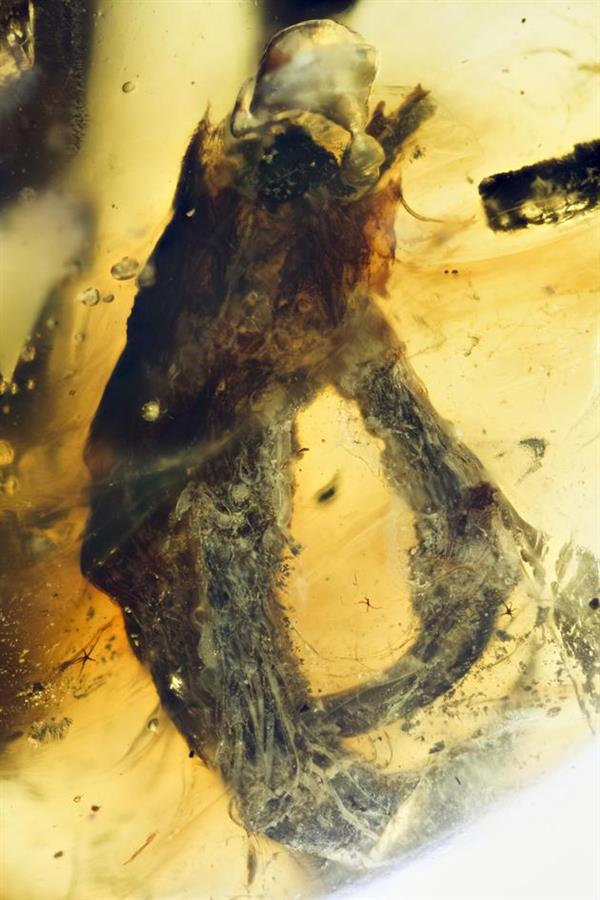Scientists find bird foot in dinosaur-era amber


BEIJING -- A team of Chinese, American and Canadian researchers have discovered amber containing a bird foot dating back around 100 million years.
The specimen was excavated at Hukawng Valley in northern Myanmar, an area rich in amber fossil discoveries. The result of the research was published by Scientific Reports on Wednesday.
"The bird foot is less than 7 millimeters long and well-preserved," said Bai Ming from the Institute of Zoology under the Chinese Academy of Sciences, co-author of the paper.
"This allows the researchers to build a high-definition three-dimensional model of the foot through computed tomography (CT)," Bai said.
The researchers found ragged fractures on the model, suggesting the bird foot was already broken before it was encased in resin which later formed into amber, according to Xing Lida, a leading scientist of the study from the China University of Geosciences in Beijing.
"The foot was probably left by predators or scavengers," Xing said.
- Hebei floods claim eight lives, 18 missing
- DNA samples of 981 Chinese fallen soldiers in Korean War collected: minister
- China identifies burial sites or finds relatives for 7,000 fallen soldiers
- Cartoon and illustration collection of 'technology and life'
- Chinese researchers discover new species of Dumbo octopus
- China Coast Guard patrols waters around Huangyan Island





































